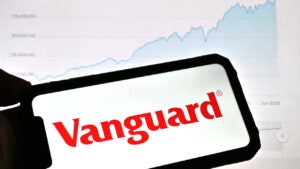Best free robo-advisors

Robo-advisors are a great choice for investors who want to simplify their investment management at costs below that of traditional financial advisors. In fact, some robo-advisors don’t even charge an annual management fee.
Robo-advisors use algorithms to build an investment portfolio for you based on your answers to a handful of questions about your risk tolerance and investment goals. Many robo-advisors also offer other features such as tax-loss harvesting and automatic rebalancing, which can boost your returns and make investing as hands-off as possible.
The best robo-advisors have fees that are considerably lower than those of traditional financial advisors and you can typically get started with a limited investment. Some robo-advisors will manage small amounts of money for free, while others don’t charge a management fee at all. Keep in mind that you’ll typically still pay fees for the funds that are used to build your portfolio.
Here’s four robo-advisors that will manage your money without a fee.
Best free robo-advisors
1. Schwab Intelligent Portfolios
Charles Schwab is probably best known as one of the best online brokers, but it also has a top-notch robo-advisor offering in Schwab Intelligent Portfolios. The basic tier is available for free and offers portfolio management, automatic rebalancing and tax-loss harvesting, though you will need at least $50,000 in assets to start tax-loss harvesting.
Schwab chooses from dozens of different funds to build your portfolio and most of the fund fees range from 0.02 percent to 0.19 percent. To be sure, Schwab uses several of its own funds in portfolio building, but it also offers funds from low-cost leaders such as Vanguard, so you can be sure you’re not paying too much in fund fees.
A premium tier comes with unlimited access to financial advisors, but you’ll pay a one-time planning fee of $300 and $30 per month after that.
- Management fee: Free for basic tier
- Fund fees: 0.02 percent to 0.19 percent
2. Fidelity Go
Fidelity Go is another strong robo-advisor choice and is a great fit for those who are just starting out. You won’t pay an advisory fee on assets up to $25,000, while those with assets above that level will pay 0.35 percent annually.
Another bonus of using Fidelity Go is that you won’t pay additional fees for the funds that you’re invested in because Fidelity uses its own zero-cost mutual funds to build portfolios. That means your total costs on assets up to $25,000 will be zero – quite a deal for those starting with small sums.
- Management fee: Free up to $25,000 in assets
- Fund fees: Free
3. Interactive Advisors
Interactive Advisors is a low-cost robo-advisor, but it’s only free if you manage the portfolio yourself, which may not be ideal for some investors. However, if you choose to have Interactive Advisors manage the portfolio for you, it will only cost 0.20 percent annually, below the typical fee of 0.25 percent.
You can choose from a number of different themed funds that come with expense ratios ranging from 0.10 percent to 0.75 percent. Interactive Advisors caps fund expenses at 0.75 percent, so you know you won’t pay more than that. Fund choices include a variety of active and passive strategies, industry funds, ESG funds and more.
- Management fee: Free if you manage it yourself
- Fund fees: Capped at 0.75 percent
4. Ally Invest Robo Portfolios
Ally Invest Robo Portfolios doesn’t charge an advisory fee, but there’s a catch: You’ll need to choose the “cash-enhanced” portfolio, which keeps 30 percent of your money in cash. The cash does earn a competitive interest rate that has risen over the past few years, but your returns could lag the market-focused portfolio. If you decide to go with the more fully invested option, you’ll pay 0.30 percent annually.
Once you select the type of account you want, you’ll have four different portfolio options that are built with low-cost ETFs. The fund fees range from 0.03 percent to 0.25 percent, but most are less than 0.10 percent.
- Management fee: Free for “cash-enhanced” portfolio
- Fund fees: 0.03 percent to 0.25 percent
Editorial Disclaimer: All investors are advised to conduct their own independent research into investment strategies before making an investment decision. In addition, investors are advised that past investment product performance is no guarantee of future price appreciation.






